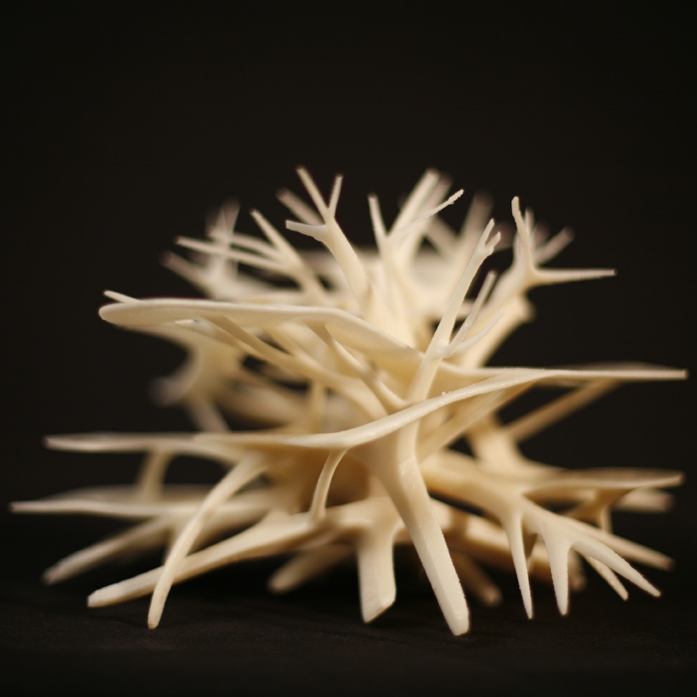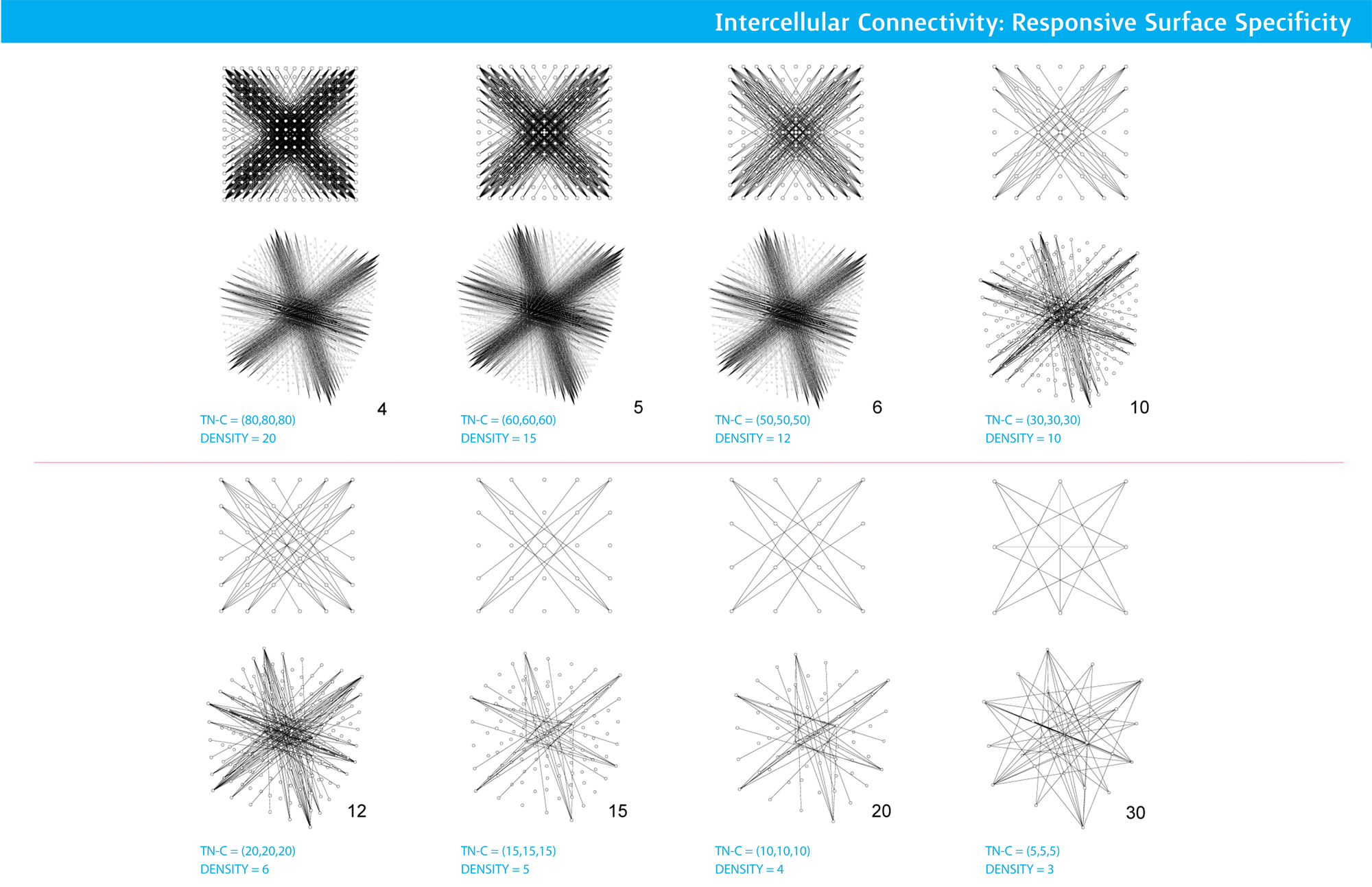Intercellular Connectivity
intercellular connectivity: responsive surface specificity
in this project we were interested in exploring the architectural implications of the study of intercellular relationships within the epithelial cells of mammary tissue. taking inspiration from LeRicolais, we would like to investigate the possibility of developing synergetic structural models in which the sum of its components yields much greater results than that of each individual part. we believe that examining cell-cell interactions through the careful study of their connective processes, along with their relation to signals from their microenvironment has the potential for implications in architecturally relevant surface topologies. through studying cell adhesion processes and the formation of the lumen in normal polarized cells, in conjunction with the breakdown of the lumen and the ECM (extra-cellular matrix) through tenascin-c dependent changes in the basement membrane, polarity, and lumen intact through an intermediate state towards a disordered condition where cells move inward disrupting the lumen due to tenascin-c introduction and basement membrane distortion. the architectural implications of a switch (tenascin-c) that alters the exterior surface condition will then affect the number of connections and the quality of connections (thickness and thinness) for the overall model. we plan on considering in our analysis the relationship between the biological process, environments, and their potential manipulations for yielding various results with intriguing architectural implications.
in collaboration with emaan farhoud and chun fang

























